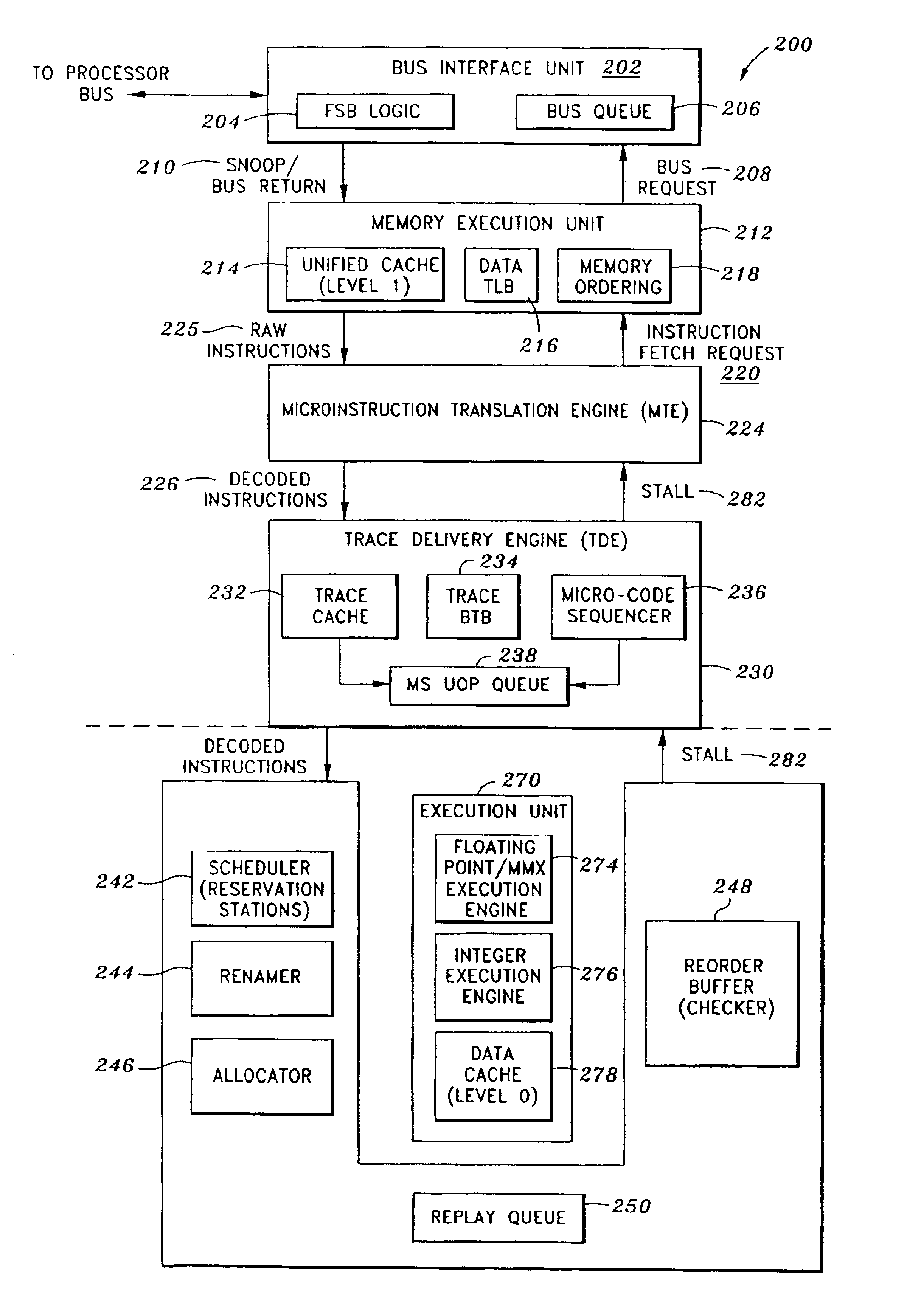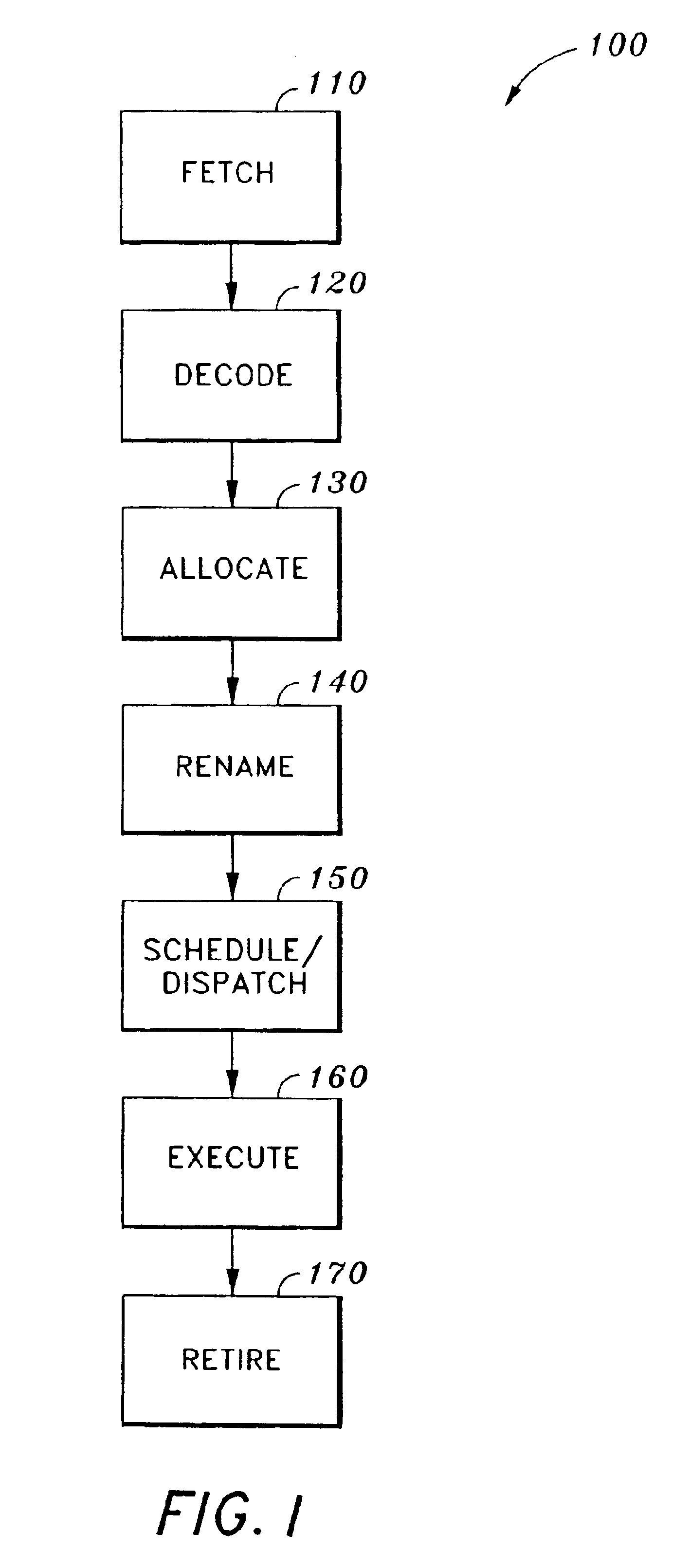Method and apparatus for controlling the processing priority between multiple threads in a multithreaded processor
a multi-threaded processor and processing priority technology, applied in multi-programming arrangements, instruments, computation using denominational number representation, etc., can solve problems such as stall condition or other delay, various available resources within the processor would have been idle, and may happen
- Summary
- Abstract
- Description
- Claims
- Application Information
AI Technical Summary
Benefits of technology
Problems solved by technology
Method used
Image
Examples
Embodiment Construction
[0023]In the following detailed description numerous specific details are set forth in order to provide a thorough understanding of the present invention. However, it will be obvious to one skilled in the art that the present invention may be practiced without these specific details.
[0024]In the discussion below, the teachings of the present invention are utilized to implement a method and an apparatus for controlling the processing priority between threads in a multithreaded processor in order to prevent deadlock and livelock problems. Each of the threads is alternately assigned the processing priority for a sufficient period of time for it to make progress. If a particular thread did not make any progress despite having the processing priority during a previous processing period, it will be given the processing priority for a longer period the next time. The period of time during which each thread is given the processing priority will continue to increase until some progress is ma...
PUM
 Login to View More
Login to View More Abstract
Description
Claims
Application Information
 Login to View More
Login to View More - R&D
- Intellectual Property
- Life Sciences
- Materials
- Tech Scout
- Unparalleled Data Quality
- Higher Quality Content
- 60% Fewer Hallucinations
Browse by: Latest US Patents, China's latest patents, Technical Efficacy Thesaurus, Application Domain, Technology Topic, Popular Technical Reports.
© 2025 PatSnap. All rights reserved.Legal|Privacy policy|Modern Slavery Act Transparency Statement|Sitemap|About US| Contact US: help@patsnap.com



